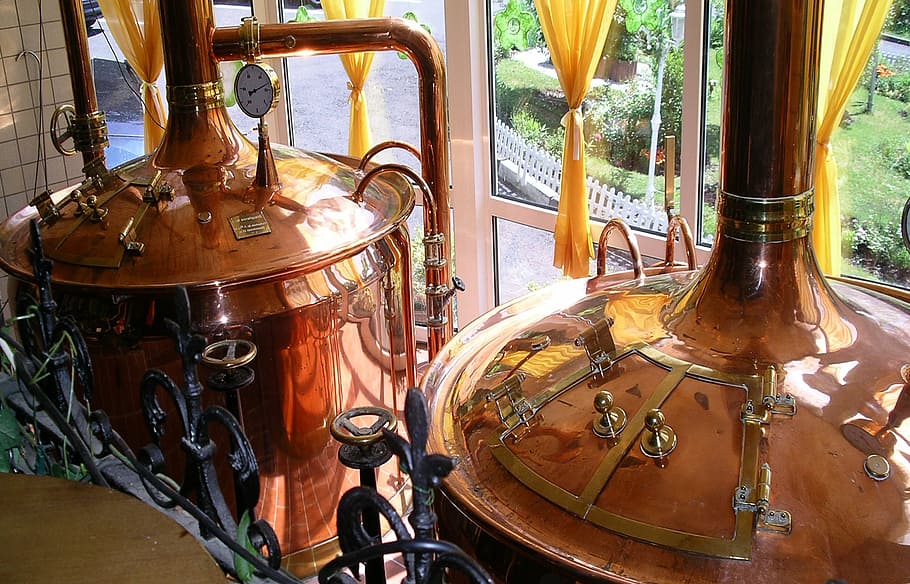The bottle or can
of beer that you purchase, manufactured with a long process. The whole process
consists of ten steps.
Ingredients: Barley, Hops, Yeast, and Water
Process in detail:
Malting:
The first step is
Malting. Malting is germination where raw grains are converted to malt. The
process includes, firstly fresh barley gets soaked in water and then put in
germinating box for germination. In this stage, enzymes are formed. These
enzymes are needed for starch separation. After germination green malt is dried
carefully at 800c. It tastes slightly sweet after dried. The malt
sugar is then mixed with yeast culture, which then forms alcohol.
Milling:
The second step is
milling. After malting, the finished malt is milled, so that it can dissolve
better in water. When malt is under milling various parts of the malt get
separated such as crushed malt, husks, groats, meal, semolina, and powder.
Mashing:
After milling the
next step is mashing. The milled malt is mixed with water in the mash tun (Mash
tun is a vat in which malt is mashed). The starch in the ground malt or grist
dissolves and sugar, protein, and tannin are released. In this process, malt is
extracted from the grist.
Lautering:
The fourth step is
Lautering. The mash is filtered or strained in lauter tun (a cylindrical vessel
for Lautering of filtering). The extracted liquid is the sugar solution called
wort. And the solid part is called spent grains, are removed from the lauter
tun and sold for cattle feed.
Wort boiling and hopping:
The fifth step is
wort boiling and hopping. The wort is boiled in a brewing pan or in wort
kettle. In this step, hops are added. The taste of the beer depends on the type
and quantity of hops added to the wort. The more hops the bitterer the beer.
The boiling temperature of the wort is above 1000c and it depends on
the gravity o the wort. After boiling, Water gets evaporated and the wort gets
concentrated on the original wort. The malt enzymes, tannins, and proteins are
separated, called trub (a byproduct).
Wort Clarification:
After boiling, the
wort is clarified or drawing off to remove the undissolved hops. In this step,
the wort is fed in the whirlpool and starts to rotate. Hops particles that have not dissolved protein (called trub) get removed by forming a cone in the middle
of the container. Then the clear wort is cooled to a temperature of 10 – 200c
in the wort cooler.
Fermentation:
The seventh step
is fermentation, the most important step. Fermentation takes place in a
fermenter or in a fermentation tank where special brewing yeast is added. The
yeast converted the malt sugar to alcohol and carbon dioxide. As soon as the
malt sugar has fermented the yeast sinks and is collected. Depending on the type
of yeast and the wort preparation top or bottom fermentation is scheduled. And
the beer is produced.
Storage:
After
fermentation, the fermented beer is stored from three weeks to three months at
the temperature of 1 - 2oc. In this time a secondary fermentation
takes place. The remaining yeast particles and protein-tannin sink to the
bottom. The beer becomes clear and acquires its characteristic color.
Filtration:
After storing for
the required time, the remaining parts after fermentation and secondary
fermentation, such as yeast particles, hops, resins, and proteins get extracted
and filtered beer is stored in another container. The beer gets clear and
final color.
Filling and bottling:
The last and final step is to fill the beer into bottles and cans under
specific temperature and pressure. The optimal temperature and pressure for
bottling are 200c and 45 psi (3 atm).
Process flowchart









No comments:
Post a Comment